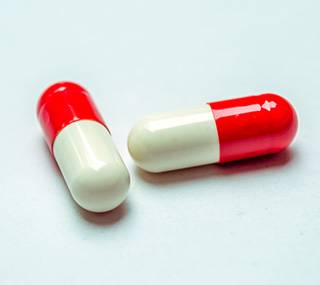Generic medicines
What are generic medicines?
A generic medicine:
- is created using the same drug substance as a medicine that has already been authorised (referred to as the reference, originator or proprietary medicine) for which the patent has expired and entered the public domain;
- must have the same qualitative and quantitative active substance composition, and the same pharmaceutical form as the proprietary medicine, and demonstrate that it has the same therapeutic efficacy (same bioavailability);
- is subject to the same prescription conditions as proprietary medicines.
Benefit of follow-up on the originator medicine
The life cycle of the proprietary medicine consists of two phases:- a 10-year trial phase to obtain an MA from a competent authority;
- followed by a 10-year use phase post-marketing, after which the patent enters the public domain.
Therefore, generic medicines are already well-known when released on the market.
A medicine for which the authorisation has been withdrawn for safety reasons cannot become a generic.
A generic medicine may only be marketed once the patient(s) protecting the originator medicine has expired.
Key points: active substance and excipients
The active ingredient or substance is the constituent of the medicine responsible for the therapeutic effect.The qualitative and quantitative active substance composition of a generic medicine is identical to that of its originator medicine. The same applies for its pharmaceutical form (tablet, capsule, syrup, patch).
The term excipient refers to any substance other than the active substance contained in the medicine. It does not have any desired pharmacological activity. All medicines – generic and proprietary – contain excipients.
The generic medicine is not necessarily strictly identical to the original medicine: it may particularly contain different excipients.
A generic medicine may be of interest because it may not contain an excipient with known effects (e.g. allergic reaction, or particular intolerance syndrome) contained in the proprietary medicine.
Excipients with known effects are cited in the generic group registry to assist substitution.
Key messages
Generic medicines may contain different excipients from those of the proprietary medicine, and thus have a different appearance, colour, or taste.
These differences may be sought in the generic. A generic medicine may thus be of interest because it may not contain an excipient with known effects contained in the proprietary medicine (smaller tablet, strawberry flavour instead of banana, etc.).
The generic medicine is not necessarily strictly identical to the original medicine: more particularly, it may contain different excipients.
These differences may be sought in the generic. A generic medicine may thus be of interest because it may not contain an excipient with known effects contained in the proprietary medicine (smaller tablet, strawberry flavour instead of banana, etc.).
The generic medicine is not necessarily strictly identical to the original medicine: more particularly, it may contain different excipients.
Substitution rules
For the prescribing doctor
Substitutions may be made between:- a reference medicine and a generic medicine;
- a generic medicine and another generic;
- herbal medicines from the group in question.
- Substitution of a proprietary medicine not containing any excipients with known effects: it is recommended to choose a generic free from any excipients with known effects.
- Substitution of a proprietary medicine containing one or more excipients with known effects: it is recommended to choose a generic containing the same excipient(s) with known effects or a generic medicine partially or completely free from these excipients with known effects.
The non-proprietary prescription (Article R.5125-55 of the French Public Health Code) must contain at least:
- the active substance(s) designated by its/their non-proprietary name;
- the dosage of active substance(s);
- the pharmaceutical form and administration route.
As of 1 January 2020
The Social Security Budget Act for 2019 amended the conditions for substituting medicines by their generics and a medical justification is now required if specifying “Do Not Substitute” (Article 66, L. 5125-23 of the French Public Health Code).
Failing this justification, the French national health insurance system reimbursement shall be based on the most expensive generic medicine.
Doctors may specify that a medicine is non-substitutable in three scenarios described in the Order of 12 November 2019 :
If the patient refuses to accept the dispensing of the generic medicine:
Pharmacists may opt not to make a substitution even if the prescriber has not marked “Do Not Substitute”, if they believe that the change may affect the quality of care provided to the patient for medicines with a narrow therapeutic index or in the case of known stock shortages.
Failing this justification, the French national health insurance system reimbursement shall be based on the most expensive generic medicine.
Doctors may specify that a medicine is non-substitutable in three scenarios described in the Order of 12 November 2019 :
- prescription for children under 6 years of age, when no generic medicine has a suitable dosage form and the reference medicine available allows this administration;
- prescription for a patient presenting with a proven formal contraindication to an excipient with known effects contained in all generic medicines available, and absent from the reference medicine;
- prescription of medicines with a narrow therapeutic index (where the patient is stabilised with a medicine with a narrow therapeutic index). The Order of 12 November 2019 sets out the list of active substances in question. This list is liable to change with the arrival of new generics for the originator medicines in question.
- EFG: no generic with a suitable dosage form for the child’s age (under 6 years) is available.
- CIF: the patient is allergic to an excipient with known effects (formal contraindication), which is absent from the proprietary medicines and present in all generics. This scenario is rare (around a dozen proprietary medicines), as generics generally have the same excipients as the proprietary medicine, or their formulation is free from excipients with known effects.
- MTE: the narrow therapeutic index medicine is listed in the Order of 12 November 2019.
For pharmacists dispensing treatments
Since 1999, pharmacists have been authorised to make substitutions according to the precise rules set out by the legislator:- the substitute product dispensed must belong to the same generic group as the product prescribed;
- the doctor must not have specified non-substitution by marking “Do Not Substitute” on the prescription;
- the substitution must not incur an additional expense for the French national health insurance system.
If the patient refuses to accept the dispensing of the generic medicine:
- the patient must pay the pharmacy the full price of the medicine dispensed (the co-payment option is not available for this prescribed medicine);
- the French national health insurance system reimburses the patient based on the price of the most expensive generic medicine.
Pharmacists may opt not to make a substitution even if the prescriber has not marked “Do Not Substitute”, if they believe that the change may affect the quality of care provided to the patient for medicines with a narrow therapeutic index or in the case of known stock shortages.
Registry of generics
This tool is used by community pharmacists as a basis for dispensing substitutable generic medicines and herbal medicines.The medicines included in the registry are classified by groups. Each group includes the reference medicine and its generics. Pharmacists are only authorised to substitute medicines listed in the same group with each other.
The registry is used along with the public medicines database. This database provides access to all information intended for professionals (SmPC) and users (package leaflet) pertaining to marketed products.
The online sale of medicines is regulated.
To find out more, refer to the file on “Online sale of medicines”.
To find out more, refer to the file on “Online sale of medicines”.







